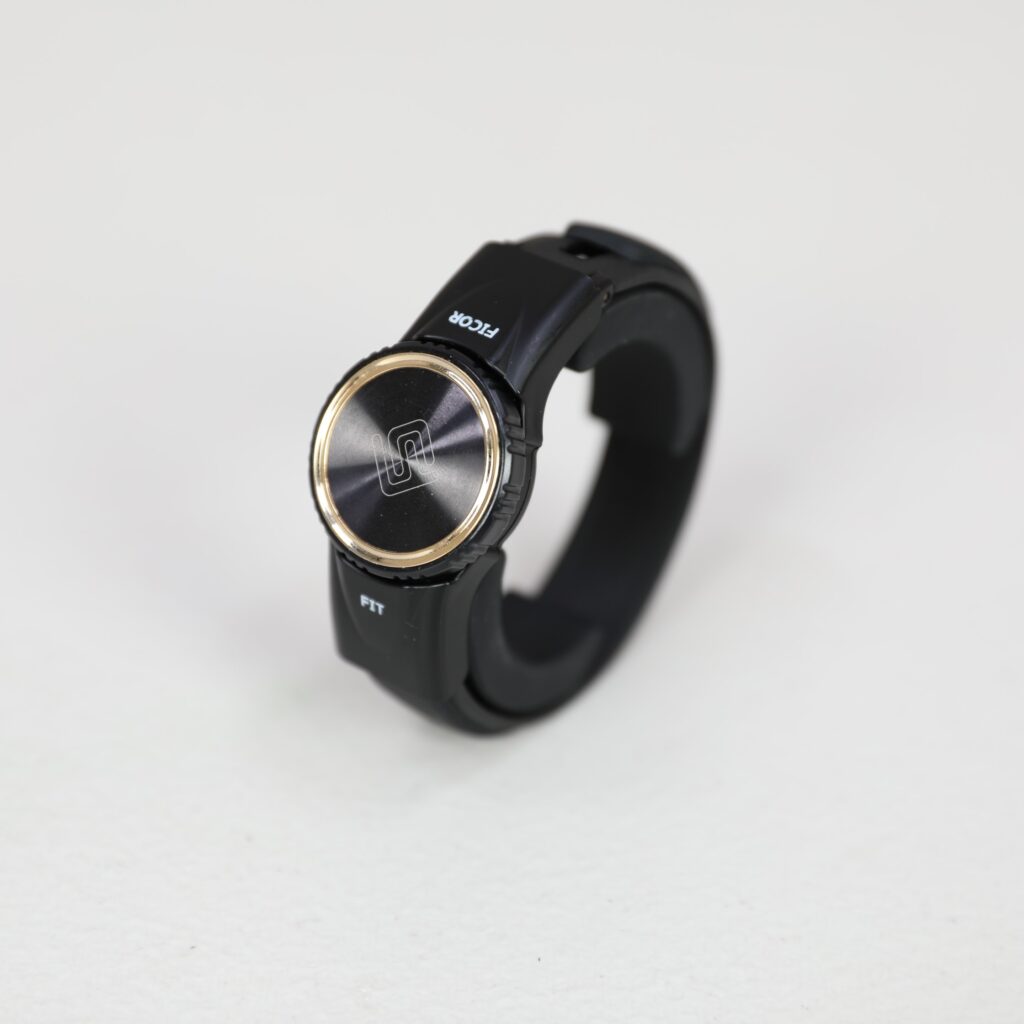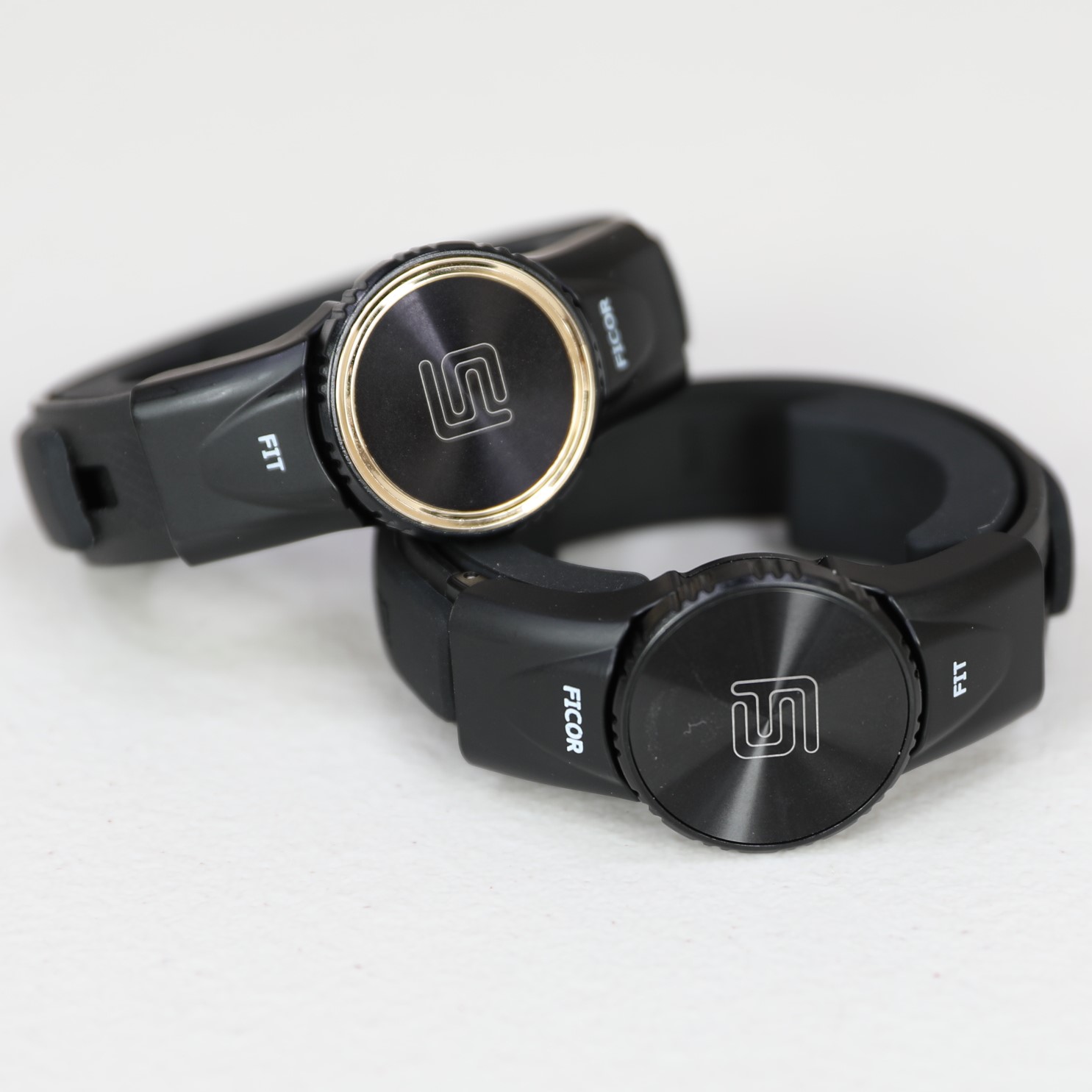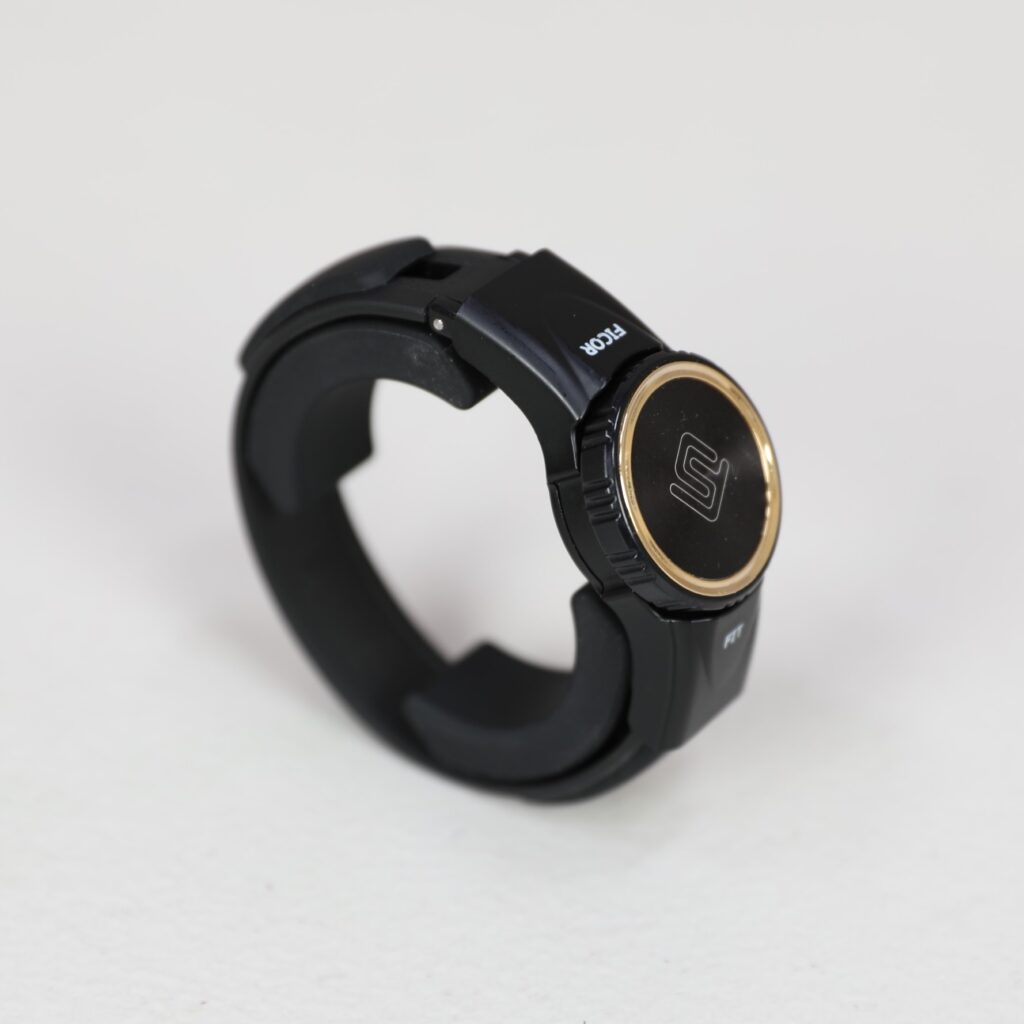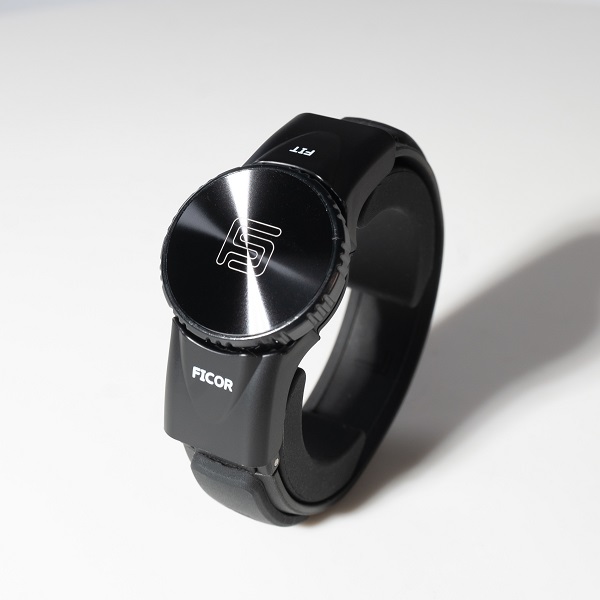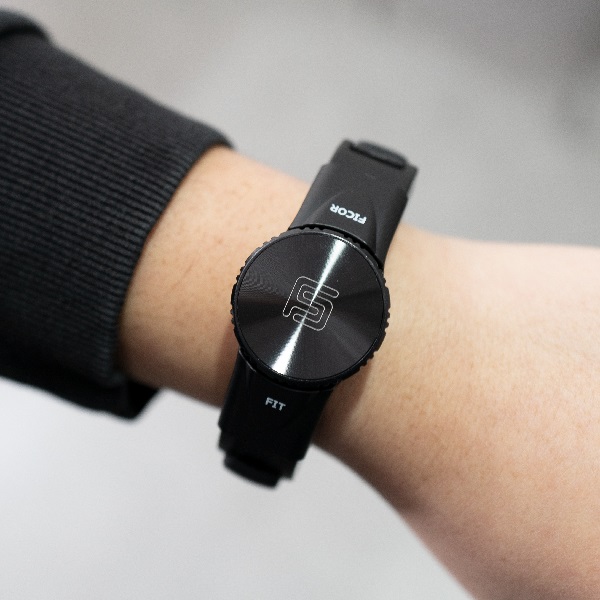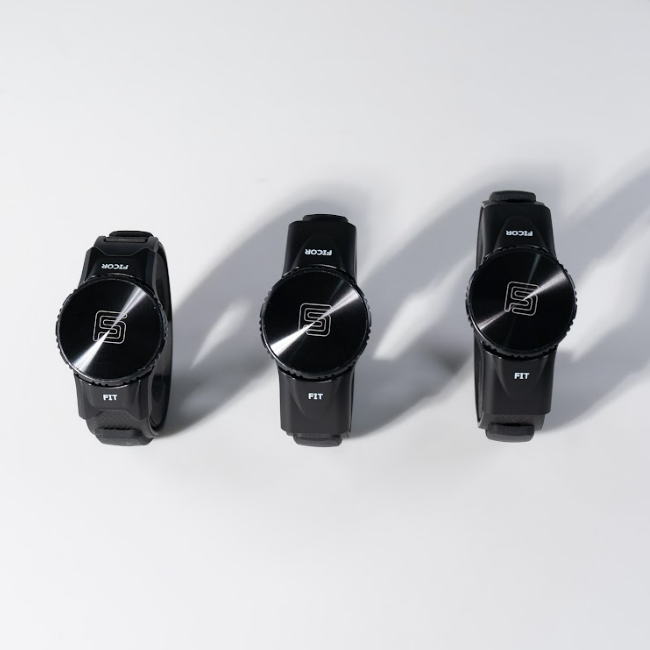Ships within 10 days.
30 Day Money-Back Guarantee
U.S. Company
Guitar Wrist Pain
Pain-Relieving Wristband for Guitar Players

Playing the guitar is not just a skill; it’s an art form that allows us to express our emotions and creativity through music. However, for many guitar enthusiasts, wrist pain can become a barrier to the harmonious connection between fingers and strings.
In this article, we’ll explore the common causes of wrist pain when playing the guitar and discover effective ways to reduce, prevent, and even eliminate discomfort. We’ll also delve into the role of wristbands like Ficor Fit and Ficor Goldilocks in providing relief and answer the burning question: how long does it take to feel relief while wearing one?
What Causes Wrist Pain When Playing the Guitar?
Wrist pain is a frequent companion for guitarists, both beginners and seasoned musicians. Several factors contribute to this discomfort:
1. Improper Technique: One of the leading causes of wrist pain is improper playing technique. Poor hand positioning, excessive force on the strings, and awkward wrist angles can strain the wrist, leading to pain.
2. Overuse and Repetition: Guitar playing often involves repetitive movements, such as strumming, fingerpicking, and fretting. Over time, these repetitive actions can lead to overuse injuries in the wrist.
3. Tension and Stress: The tension of performing in front of an audience or striving for perfection can result in increased muscle tension and wrist stress.
4. Guitar Type: Different types of guitars, such as acoustic, electric, or classical, can have varying neck widths and string tensions, which may affect wrist comfort.
How to Reduce Guitar Wrist Pain

If wrist pain is dampening your guitar-playing spirit, there are strategies you can employ to find relief:
1. Proper Technique: Invest time in learning and practicing proper guitar-playing techniques. Seek guidance from experienced instructors who can help you maintain correct hand and wrist positions.
2. Warm-Up Exercises: Begin your practice sessions with gentle wrist and finger stretching exercises. This helps prepare your muscles and tendons for the demands of playing.
3. Frequent Breaks: Avoid long, continuous playing sessions. Take short breaks to rest your wrists and hands and reduce the risk of overuse injuries.
4. Ergonomic Guitar Setup: Ensure your guitar is set up correctly to match your body and playing style. Adjust the guitar strap height and neck angle to minimize strain on the wrist.
5. Ice and Rest: If you experience acute wrist pain, apply ice to reduce inflammation and rest your wrist until the pain subsides.
How to Prevent Wrist Pain When Playing the Guitar
Prevention is always better than cure. Here are some proactive steps to prevent wrist pain when playing the guitar:
1. Choose the Right Guitar: Select a guitar that suits your playing style and body size. Trying out different types can help you find the one that minimizes wrist strain.
2. Regular Stretching: Incorporate wrist and finger stretching exercises into your daily routine, even on non-playing days, to maintain flexibility and prevent stiffness.
3. Moderation: Avoid excessive practice durations, especially when you’re just starting. Gradually increase your practice time as your wrist strength and endurance improve.
4. Proper Rest: Adequate sleep and rest are essential for overall muscle recovery, including your wrist muscles. Ensure you get enough sleep, especially during intense practice periods.
5. Nutrition: Maintain a balanced diet rich in nutrients that support muscle and joint health. Adequate hydration is also crucial for preventing stiffness.
When should I consult a doctor for persistent guitar-related wrist pain?
Consulting a doctor for persistent guitar-related wrist pain is advisable under certain circumstances. If you experience the following situations, it’s essential to seek medical attention:
1. Severe or Intense Pain: If the pain is severe, acute, or debilitating and doesn’t improve with rest or basic home remedies, consult a doctor.
2. Chronic Pain: When wrist pain becomes chronic, lasting for several weeks or months, despite attempts to alleviate it through self-care measures.
3. Limited Range of Motion: If you notice a significant reduction in wrist mobility or difficulty moving your wrist normally while playing the guitar.
4. Numbness or Tingling: If you experience numbness, tingling, or a “pins and needles” sensation in your wrist, hand, or fingers, as it could indicate nerve involvement.
5. Swelling or Inflammation: When your wrist is visibly swollen, warm to the touch, or shows signs of inflammation, it may indicate an underlying issue that requires medical evaluation.
6. Persistent Discomfort After Rest: If the pain persists even after taking a break from playing the guitar and implementing rest and self-care strategies.
7. Pain Spreading or Worsening: If the pain begins to radiate to other parts of your arm, shoulder, or neck or worsens over time.
8. Difficulty in Daily Activities: When wrist pain starts interfering with your daily activities, such as writing, typing, or gripping objects.
9. Prior Medical Conditions: If you have a history of wrist injuries, musculoskeletal disorders, or any underlying medical conditions that may exacerbate the pain.
10. Unexplained Symptoms: If you notice any unexplained or concerning symptoms accompanying the wrist pain, such as weakness, joint instability, or a loss of sensation.
In these situations, it’s essential to consult a healthcare professional, preferably one with expertise in musculoskeletal issues or sports medicine. They can perform a thorough evaluation, potentially order diagnostic tests like X-rays or MRI scans, and recommend a personalized treatment plan to address the underlying cause of your wrist pain and help you safely resume your guitar playing. Ignoring persistent pain can lead to further complications, so early intervention is crucial for a successful recovery.
Can a Wristband Help Relieve Wrist Pain?

Do You Have Wrist Pain When Playing Guitar?
Experience the innovative design
of the Ficor Goldilocks wristband
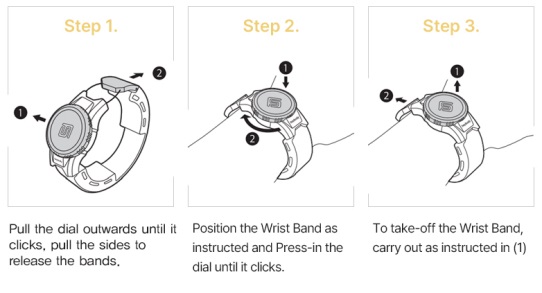
Wristbands like the Ficor Fit and Ficor Goldilocks are designed to provide support and stability to the ulnar bones of the wrist. They utilize pressure to help reduce wrist pain associated with various activities, including playing the guitar. Here’s how they can help:
– Stabilization: Wristbands offer targeted support to the wrist, reducing the strain on muscles and tendons. This can help alleviate pain caused by overuse or improper technique.
– Pressure Distribution: Ficor Fit and Ficor Goldilocks are engineered to distribute pressure evenly across the wrist, promoting better circulation and reducing the risk of discomfort.
– Enhanced Performance: By providing stability and support, wristbands can improve your overall playing experience, allowing you to focus on your music without the distraction of pain.
We have plenty of information of how our wristbands work if you’d like to read more.
How Long Does It Take to Feel Relief with a Wristband?
The time it takes to feel relief from wrist pain while wearing a wristband can vary from person to person. It depends on several factors, including the severity of the pain, the cause of the pain, and how consistently you wear the wristband.
For some, relief may be immediate as the wristband provides instant support and pressure distribution. Others may require a few days or even weeks of consistent use before experiencing significant relief. It’s essential to wear the wristband during practice sessions and, if needed, during everyday activities to maximize its benefits.
In conclusion, wrist pain should not be a barrier to your musical passion. By adopting proper techniques, taking preventive measures, and considering the support of wristbands like Ficor Fit and Ficor Goldilocks, you can find relief and continue to create beautiful melodies on your guitar. Remember that each journey to pain-free playing is unique, so be patient and persistent in your pursuit of harmonious guitar sessions.
Wrist Pain Symptoms
Symptoms of CTS include pain and tingling in the wrist & fingers, numbness/weakness in the hand.
Golfer’s elbow occurs when the tendons and muscles in the forearm are overused.
The symptoms of Tennis Eblow can include pain, swelling, and stiffness in the elbow.
Repetitive Strain Injury (RSI) is caused by repetitive motions such as typing, sewing, or using a mouse.
Triangular Fibrocartilage injuries are caused by overuse or misuse of a muscle or joint.
Wrist tendonitis is inflammation of the wrist tendons and can affect all ages.
Wrist sprains are characterized by twisting or rotating the wrist suddenly.
De Quervain’s Tenosynovitis causes pain and tingling in the wrist or hand.




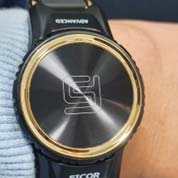


© Ficor Health, Inc. | All Rights Reserverd

